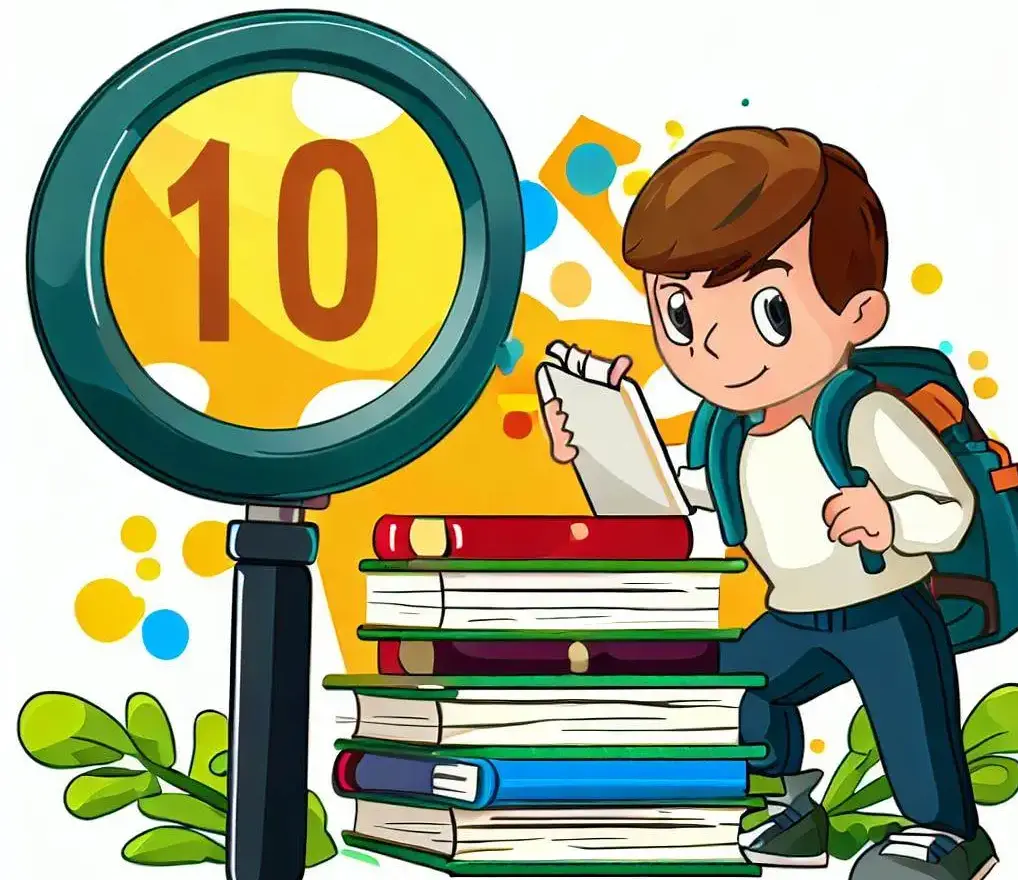The 10 Best Resources for Successfully Solving Algorithms Homework

The study of computer science and software engineering cannot exist without the use of algorithms. Programmers are able to develop effective solutions for difficult problems with the help of these powerful problem-solving techniques. The completion of algorithms homework can be difficult for students, particularly students who are new to the field. Students, on the other hand, may find it simpler to complete their algorithms homework thanks to the wealth of resources that are readily available online.
This blog presents a list of the top ten resources available to students for assisting them in completing their algorithm-related homework. Online coding platforms, algorithm visualization tools, online tutorials and courses, algorithm analysis books, websites devoted to algorithms and data structures, online discussion boards and forums, algorithm visualization YouTube channels, online coding communities, algorithmic problem-solving blogs, and academic resources are all included in these resources.

1. Online Coding Platforms
Online coding platforms such as HackerRank, LeetCode, and CodeSignal provide users with a wide variety of algorithmic problems that cover a variety of subject areas, including arrays, graphs, and dynamic programming, amongst others. Not only do these platforms offer students a wide variety of problems with varying degrees of difficulty, but they also enable students to submit their own solutions and receive immediate feedback on the correctness and effectiveness of their code. In addition, these online platforms frequently host coding contests and challenges, which give students the opportunity to pit their coding skills against those of other participants. Students are able to seek guidance, share insights, and learn from others' approaches through the discussion forums and community sections that are included on these platforms. These sections serve as valuable resources. Students can hone their ability to solve algorithmic problems by using online coding platforms, which offer a plethora of problems to solve and a community that is encouraging and helpful. These platforms are an invaluable resource for students.
2. Algorithm Visualization Tools
Students are able to observe the execution of the algorithm step by step as well as the data transformations that occur at each stage thanks to the use of algorithm visualization tools such as VisuAlgo and Algorithm Visualizer. These tools present algorithms in an interactive and visual manner. Students are given the opportunity to explore various scenarios and observe how algorithms behave when subjected to varying conditions, all thanks to the fact that many of these tools provide customizable input parameters. Students can develop a more intuitive understanding of the inner workings of algorithms and a better comprehension of complex concepts such as recursion, sorting, and graph traversal by visualizing the algorithms in action and seeing how they function. Students can improve their understanding of abstract algorithms and gain a deeper insight into how they work by using algorithm visualization tools, which serve as powerful aids for students to grasp abstract algorithms more effectively.
3. Online Tutorials and Courses
Structured and all-encompassing educational opportunities to learn about algorithms can be found in the form of online tutorials and courses on websites such as Coursera, edX, and Udemy. These classes go over a wide variety of subjects, such as algorithm design paradigms, data structures, and algorithmic analysis, among other things. Students are able to learn at their own pace and strengthen their comprehension through hands-on practice by completing coding homework, taking quizzes, and watching video lectures. In addition, many of these platforms feature question-and-answer sessions and discussion forums where students can engage in two-way communication with their teachers and fellow students to seek clarification and share their perspectives. Students who are more comfortable with a regimented method of instruction are likely to find online tutorials and courses to be an invaluable resource. Online tutorials and courses offer curated course materials, guidance from instructors, and interactive components.
4. Algorithm Analysis Books
Books on algorithm analysis such as "Introduction to Algorithms" and "Algorithm Design Manual" delve into the theoretical foundations of algorithms. These books cover fundamental concepts such as algorithmic correctness, time complexity, and space complexity. Students will benefit from reading these books because they contain extensive explanations, proofs, and examples that help them understand algorithmic techniques and evaluate the effectiveness of those techniques. In addition, books on algorithm analysis typically include a variety of exercises and problem sets of varying degrees of difficulty, which give students the opportunity to practice applying the ideas that they have learned. Working through these exercises, not only will they strengthen their ability to solve problems, but it will also help them to solidify their understanding of the design and analysis of algorithms. Students who are interested in getting a better understanding of algorithms and the underlying principles that govern them would benefit from using algorithm analysis books as comprehensive references and as self-study companions.
5. Algorithm and Data Structures Websites
The algorithmic process and various data structures Websites such as GeeksforGeeks, Topcoder, and Stack Overflow offer a vast repository of articles, tutorials, and coding examples related to algorithms on their respective platforms. Students have access to valuable resources to study and learn from on these websites, which cover a wide variety of algorithms, data structures, and coding techniques. Articles typically include in-depth explanations, algorithm visualizations, and code implementations written in a variety of programming languages. In addition, these websites have specific sections devoted to the preparation of students for interviews. In these sections, students can find frequently asked algorithmic questions and the solutions to those questions. Students can gain a more comprehensive understanding of a variety of algorithms and improve their problem-solving skills by gaining exposure to a variety of coding approaches and solutions if they explore websites that are dedicated to algorithms and data structures.
6. Online Forums and Discussion Boards
Students are able to seek guidance, ask questions, and participate in discussions regarding algorithms within thriving online communities that can be found at places like Stack Overflow and Reddit's r/learn programming. Students can use these platforms as a place to discuss the difficulties they are encountering, inquire about the meaning of various algorithmic concepts, and receive assistance from more seasoned programmers and programming enthusiasts. Students can gain insights into a variety of algorithmic approaches and learn about other potential solutions to problems by benefiting from the diverse perspectives and collective knowledge of the community. Students can improve their understanding of algorithms by actively participating in online forums and discussion boards, which fosters a sense of camaraderie, encourages collaboration, and provides students with the opportunity to do so. Students can learn from both their peers and from subject matter experts.
7. Algorithm Visualization YouTube Channels
Algorithm visualization There are many different approaches to learning, and YouTube channels such as "Back To Back SWE" and "MIT OpenCourseWare" provide video tutorials and lectures that cater to these various approaches. These channels make use of visual aids, animations, and real-time coding demonstrations in order to make complicated algorithms easier to understand. Students have the opportunity to follow along with the videos, observe the behavior of the algorithm, and obtain a visual understanding of the steps that are involved. The explanations that are given by the instructors help to clear up complicated ideas and bridge the gap between theoretical knowledge and the application of that knowledge in the real world. Algorithm visualization Students can grasp algorithmic concepts, reinforce their learning, and gain insights into effective problem-solving strategies through the use of YouTube channels, which offer an engaging and accessible medium for students to learn in.
8. Online Coding Communities
Students can connect with a worldwide community of other programmers, developers, and enthusiasts by becoming members of online coding communities such as GitHub and GitLab. These platforms provide the opportunity for users to collaborate on open-source projects that involve various data structures and algorithmic processes. Students have the opportunity to put their knowledge to use in the real world by contributing to these projects, where they can also gain exposure to a variety of coding styles and techniques and receive feedback on their own code from seasoned developers. Students are able to ask for assistance, share ideas, and participate in algorithmic discussions through the use of online coding communities, which also provide forums and discussion boards. Students are able to improve their ability to solve algorithmic problems through practical application and collaboration when they participate in these communities, which also fosters a sense of community, encourages continuous learning, and promotes continuous learning.
9. Algorithmic Problem-Solving Blogs
The algorithmic problem-solving blogs that are kept up to date by websites like HackerRank and Codeforces provide a plethora of tutorials, articles, and coding challenges that are centered on algorithms. These blogs cover a wide variety of algorithmic subjects, such as dynamic programming, graph algorithms, and optimization techniques. The articles frequently include in-depth explanations, code snippets, and real-world examples to illustrate the various ideas and methods that are brought up in the discussions. Students can subscribe to these blogs in order to remain current with the most recent developments in algorithmic practices, gain knowledge about novel approaches to problem-solving, and gain access to helpful resources that will assist them with their homework. Students gain a comprehensive comprehension of algorithmic problem-solving strategies and techniques by reading blogs that offer a combination of theoretical knowledge and practical insights. These blogs provide students with a well-rounded understanding of algorithms and techniques.
10. Academic Resources and Research Papers
Students are provided with information on cutting-edge research and advancements in the field of algorithms through the use of academic resources and research papers that are made available through platforms such as IEEE Xplore, ACM Digital Library, and Google Scholar. These resources provide an in-depth look into a variety of specialized topics, cutting-edge algorithms, and emerging fields of research. Students can gain exposure to advanced algorithmic techniques, uncover novel approaches to problem-solving, and broaden their understanding beyond the scope of standard textbooks by exploring academic resources. These benefits can be obtained by students. Students are given the opportunity to delve deeper into the theoretical aspects of algorithms through the reading of research papers, which frequently provide in-depth explanations, proofs, and empirical analyses of algorithmic approaches. Students who demonstrate a commitment to exploring the cutting edge of algorithmic research by incorporating academic resources and research papers into their homework demonstrate an advanced level of concept application and show that they are capable of working with more complex ideas.
Conclusion
Utilizing the wide variety of resources that are at the students' disposal makes it easier for them to complete the algorithmic homework that has been assigned to them. Students have access to a comprehensive toolkit that includes online coding platforms, algorithm visualization tools, online tutorials and courses, algorithm analysis books, websites that focus on algorithms and data structures, online discussion boards and forums, algorithm visualization YouTube channels, online coding communities, algorithmic problem-solving blogs, and academic resources. This allows students to improve their understanding of algorithms and effectively complete homework. Students have the opportunity to improve their ability to solve problems, learn valuable lessons from seasoned programmers, and cultivate a profound appreciation for the complex world of algorithms when they make use of the resources that are available to them.